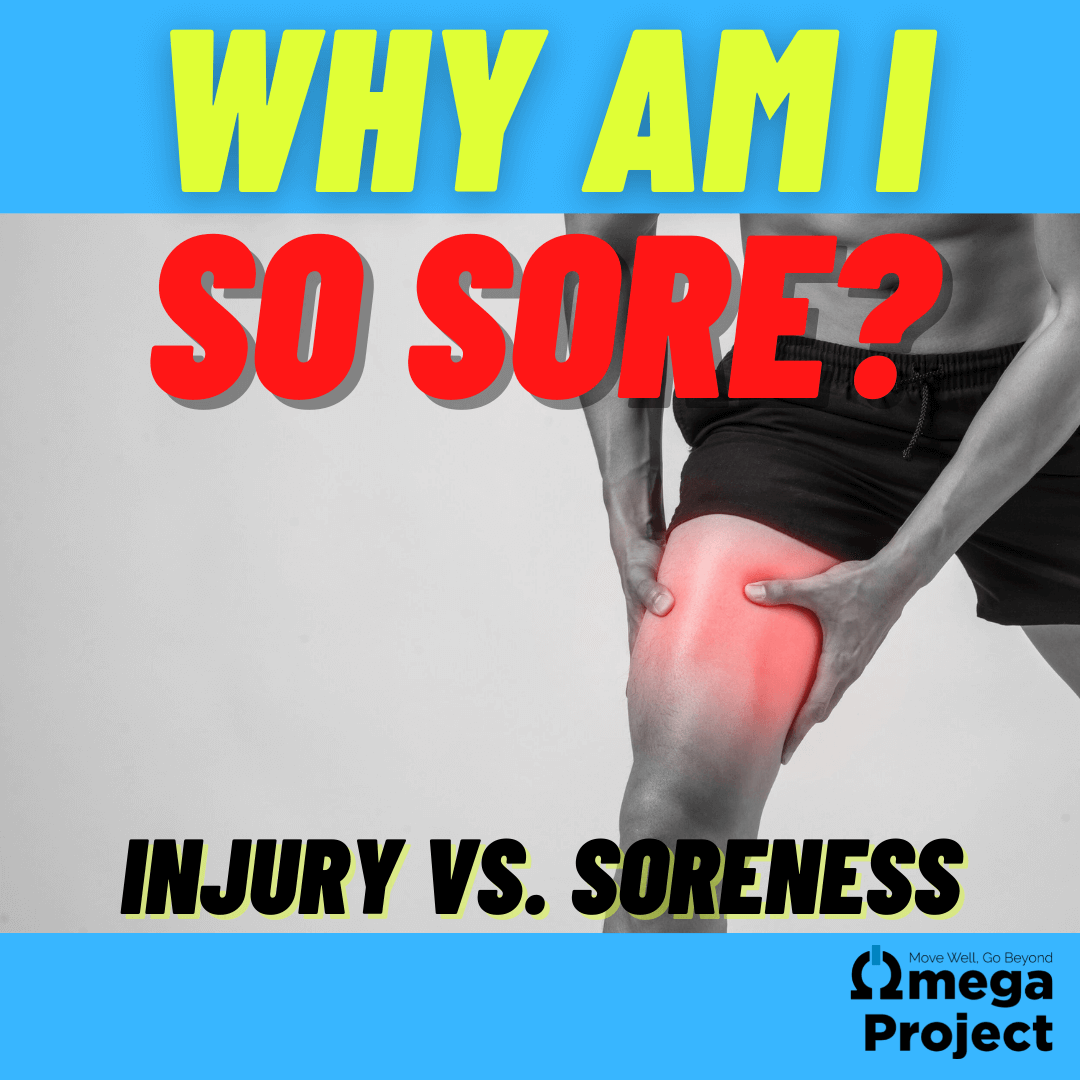Pre-season is in full swing for the high school athletes and many of you are racing 5Ks, marathons and triathlons again. We’re all familiar with that day after feeling of waking up sore and barely being able to walk up and down the stairs.
This feeling is called DOMS, or delayed onset muscle soreness. It can be pretty debilitating for a few days. Today we’re going to talk about what DOMS is, what we can do about it, and how to tell the difference between DOMS and an injury.
The first thing we need to tell you here is that the reason for DOMS and the best treatment strategies are not well defined. With that being said, the soreness most likely has to do with some form of muscle damage and inflammation. There are also theories about lactic acid build up or other things that need to be flushed from the system. Overall, whenever we train to get better, we are essentially breaking down tissue so we can come back stronger. (Hey, did we ever tell you how important recovery is!!??) So, it is probable that the soreness of DOMS is a stronger version of that break down. This is most likely to occur at the beginning of a new season or the initiation of a new activity.
Because there is also no well defined treatment of DOMS, the best thing is to prevent it in the first place. Ideally, preparation and build-up would prevent the severe soreness of pre-season (i.e. summer training). This isn’t always possible, of course. Sometimes it might even feel rewarding to have some post-exercise soreness such as after accomplishing 10 push-ups for the first time or running a marathon. That’s ok. You just have to be aware of what do to in the days following.
In these cases, the research doesn’t support much of any treatment except gentle exercise. Exercise could include some light movement for the sore muscle group (walking, easy run, gentle yoga). Ideally, you would want to refrain from strenuous activity using that muscle group for about 1-2 days while the tissue rebuilds. Treatments such as ice, massage, foam rolling, and recovery pumps may feel good but research has not shown them to decrease the time of DOMS.
How do I know if it’s an injury or DOMS?
The phrase I will steal from Doug is, “Did you earn the pain?” Basically, if your soreness seems to match the effort, you are probably experiencing DOMS. If you are more sore than you should be for the effort, you may be experiencing an injury.
We can also mostly assume that DOMS would affect both sides and an injury would affect one side. However, this is not always the case. For example, you may have done a hilly technical hike and on your walk down, you walked sideways leading with your left leg. Your right leg, which was controlling the lowering will likely be much more sore. Alternatively, if you’ve been injured and you’re returning to sports, you may be more sore and experience DOMS on the injured side because you’ve been protecting it. It doesn’t necessarily mean you re-injured it. This is why it is very important to follow our “soreness rules” when returning to any activity after injury.
If you’re uncertain, reach out to a movement professional before soreness turns to injury. It’s always best to stay ahead of your pain, which will also result in your performing your best!

